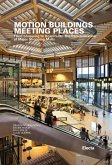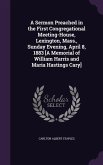High Quality Content by WIKIPEDIA articles! In colonial New England, there was little distinction between faith and community. Each community built a meeting house, usually but not always through taxation, and these were used for both religious worship and town business. They were the central focus of the community, and were an important point of contact for all. The central focus of every New England town was the meeting house. These structures were usually the largest building in the town. They were always very simple buildings, with no statues, decorations, or stained glass. Not even a cross hung on the wall. The origin of the "town meeting" form of government, can be traced to meeting houses of the colonies. The meeting houses that survive today were generally built in the last half of the 1700s. The styles are remarkably similar, most were almost square, with a steep pitched roof running east to west. There were usually 3 doors: The one in the center of the long south wall was called the "Door of Honor," and was used by the minister and his family, and any honored out-of-town guests.
Bitte wählen Sie Ihr Anliegen aus.
Rechnungen
Retourenschein anfordern
Bestellstatus
Storno








